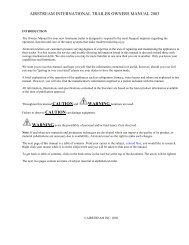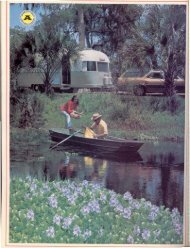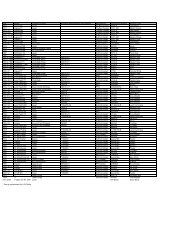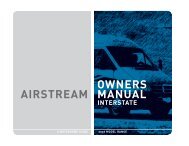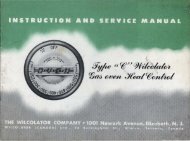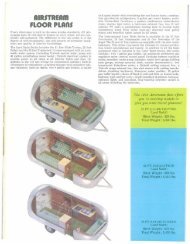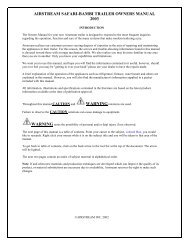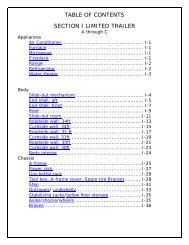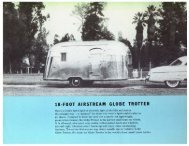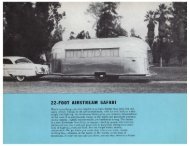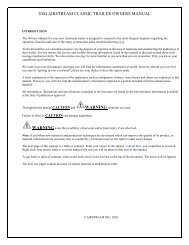Classic - Airstream
Classic - Airstream
Classic - Airstream
Create successful ePaper yourself
Turn your PDF publications into a flip-book with our unique Google optimized e-Paper software.
Exterior<br />
D<br />
special gauge will be required designed for larger tires.<br />
• Don’t bleed air from warm tires to reduce pressure buildup<br />
Don’t inflate tires to cold PSI rating beyond rim specifications.<br />
Tire pressure should never be reduced below the vehicle manufacturer’s<br />
recommended levels to support load conditions in order to improve the ride quality<br />
of a vehicle. The difference in ride quality is not significant. When minimum inflation<br />
pressure requirements are not met, tire durability and optimum operation can be<br />
affected.<br />
Always check air pressure with an accurate air gauge at a cold PSI. Never<br />
reduce pressure when a tire is hot and never exceed the maximum cold<br />
pressure molded on the sidewall.<br />
Tires on RV applications are subject to a variety of more severe conditions<br />
when compared to automobiles or trucks. Because of many chassis and<br />
optional equipment differences, it is possible for an RV to be within its Gross<br />
Vehicle Weight Rating (GVWR), but overloaded when taking into consideration<br />
the weight of each wheel position.<br />
The only way you can know the safe load and inflation pressure for the<br />
tires your RV is to know the actual weight of each wheel position under<br />
actual loaded conditions.<br />
Under inflation of a tire can cause poor handling, irregular wear, and decreased<br />
fuel economy. It also causes extreme heat build up within the components of<br />
the tire, which can lead to failure. Over inflation of the tire causes a deformation<br />
of the contact patch resulting in crowning of the center tread. This causes<br />
handling problems such as reduced traction, irregular wear, and an increased<br />
chance for impact damage.<br />
Only after the individual loaded weight is known for each wheel position can<br />
a recommended air pressure be utilized using the load and inflation tables<br />
included in this web site.<br />
If there is a difference between one side of the RV versus the other, the load<br />
must be redistributed so weights are as even as possible. As stated, you can be<br />
overloaded by specific wheel position, as well as one side compared to another.<br />
Such a situation can cause stresses on tires, wheels, and other components.<br />
Always check air pressure with an accurate air gauge at a cold PSI. Never<br />
reduce pressure when a tire is hot and never exceed the maximum cold<br />
pressure molded on the sidewall.<br />
The following work sheets are used for determining your loaded weight by<br />
D - 14



